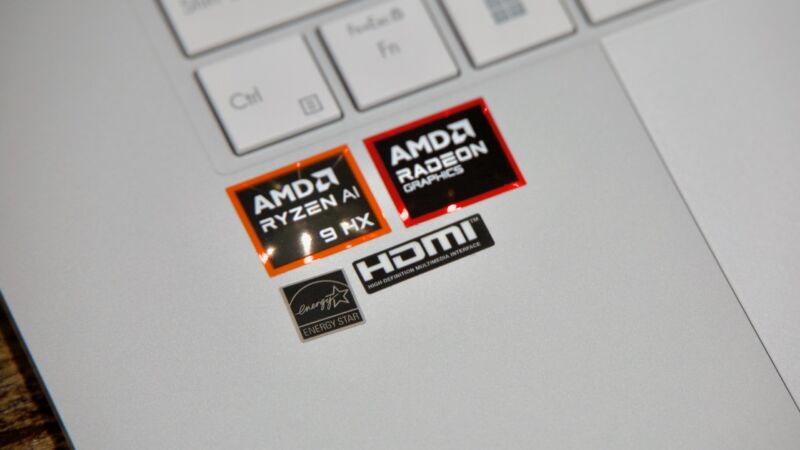Enlarge / With or without the “AI,” AMD’s new laptop processors are pretty good. (credit: Andrew Cunningham)
For all the noise about neural processing units (NPUs) and the generative AI capabilities of new and upcoming chips, NPUs don’t yet do all that much in terms of day-to-day, bread-and-butter computing.
So when I’m evaluating new processors that make a big deal about their AI processing capabilities, my unofficial rule of thumb has been to mostly ignore the AI stuff and focus on more traditional metrics: If the AI bubble popped tomorrow and the hype wave dissipated, would these still be worthwhile chips? Qualcomm’s Snapdragon X SoCs were launched alongside a pile of AI-related software announcements, but they’re impressive mostly because they’re very good at basic computer-y things: They feel fast, and they enable good battery life.
Despite the “AI” that AMD has added to the name, I’m looking at the new Ryzen AI 300-series pretty much the same way. The test system AMD provided—a 16-inch Asus ZenBook UM5606W with a Ryzen AI 9 HX 370 and an integrated Radeon 890M GPU in it—shows that the chip is a small but significant bump over the older Ryzen 7000- and 8000-series laptop CPUs. For various reasons, those chips were already a bit easier to recommend than Intel’s 13th-generation Core processors and both Ultra and non-Ultra Intel Core CPUs, and the Ryzen AI upgrade provides solid boosts to CPU performance and graphics while still maintaining good power efficiency and battery life.
Read 18 remaining paragraphs | Comments




